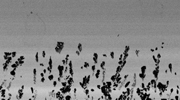 |
 |
 |
 |
 |
 |
Opportunities
for theses (Studien-, Diplom- und Bachelorarbeiten)
Professor M. Rettenmayr
|
 |
 |
 |
Diploma
theses and other student research work in the Metallic Materials
Department are frequently in collaboration with other research groups or
industrial partners. The subjects are regularly adapted, depending on
the requirements of these collaborations. The subjects listed below are
meant to give an orientation about the research possibilities, but not
to provide all-ready picks.
In a personal conversation with Prof. Rettenmayr personal preferences should be identified and included in
the planned research work. The available subjects for theses are NOT limited to the ones mentioned below. |
 |
 |
|
|
 |
 |
|
subject
1 |
”oxidation behavior of Ni-Ti alloys“ |
 |
Ni-Ti alloys are
frequently used as medical implant alloys. Body tissue and body fluid
are protected from the Ni in the alloy by a protective oxide layer that
consists of almost pure titanium oxide. However, the protective
function of the oxide layer depends strongly on crystal defects and
macroscopic defects. For tayloring the properties of the oxide layer,
annealing experiments with different oxygen isotopes will be carried
out, the oxidation kinetics will be characterized by
gravimetry and Rutherford Backscattering Spectroscopy |
|
 |
 |
 |
|
subject
2 |
”fragmentation of
dendrites“ |
 |
Fragmentation
of
dendrites is a fundamental phenomenon that has so far rarely been
studied, despite its impact on technical applications: fragmentation
can lead to defects and microstructural transitions in cast
parts, leading to enormous financial burdens in industry.
Conditions that occur during technical processes will be generated in
the laboratory, fragmentation will be quantified. |
|
 |
 |
 |
|
subject
3 |
”development of shape memory
allyos for architecture“ |
 |
Shape
memory alloys
are an interesting class of metallic materials, even though their use
in technical applications is still limited. A new idea
suggested
by civil engineers is to adapt shape memory alloys to applications in
architecture. For this the production process (melting, heat treatment,
mechanical deformation) needs to be re-optimized. After each production
step the alloys will be characterized metallographically and concerning
the phase transformation temperatures. This project is in collaboration with the Civil Engineering Department at BU Weimar |
|
 |
 |
 |
|
subject
4 |
”simulation of the evolution
of concentration distributions in multicomponent alloys“ |
 |
Inhomogeneous element
distributions in cast alloys can lead to severe problems during their
application. An example is the corrosion behavior that depends strongly
on the local composition. With one-dimensional microsegregation models,
the element and phase distribution can be predicted quite reliably, so
that simulations can be used to optimize solidification or annealing
parameters in technical applications. In the project, an existing
program code will be made more user friendly, so that it can not only
be used by experts, but also by users with only basic knowledge on
solidification structures and phase diagrams. This project is in
collaboration with GTT Technologies, Aachen.
|
|
 |
 |
 |
|
subject
5 |
”Establishment of a database
for the atomic mobility during diffusion“ |
 |
In
diffusion
calculations, generally simple differential equations are used,
following the early formalism of A. Fick. The complexitiy of the
diffusion process is frequently included by introducing sophisticated
dependencies of the diffusion coefficient (see e.g. 'thermodynamic
factor' in lecture notes 'Metalle'). It has been shown in the
literature that diffusion in multicomponent systems can be more easily
treated, if instead of the diffusion coefficient the atomic mobility is
used as kinetic constant. In the thesis a data base is to be built up
that contains atomic mobilities of alloying elements in Aluminium. For
this, concentration gradients will be convertet to potential gradients,
the mobilities will be determined by comparing calculated concentration
profiles generated with the two different methods. |
|
 |
 |
|
|



